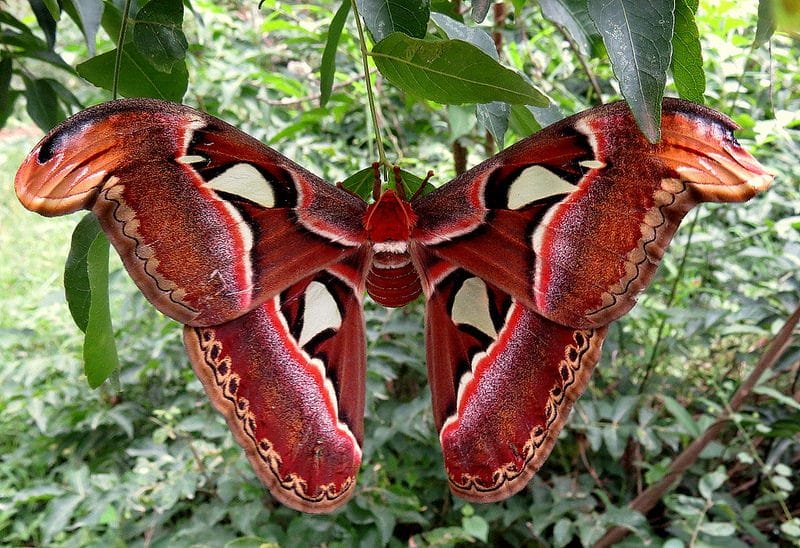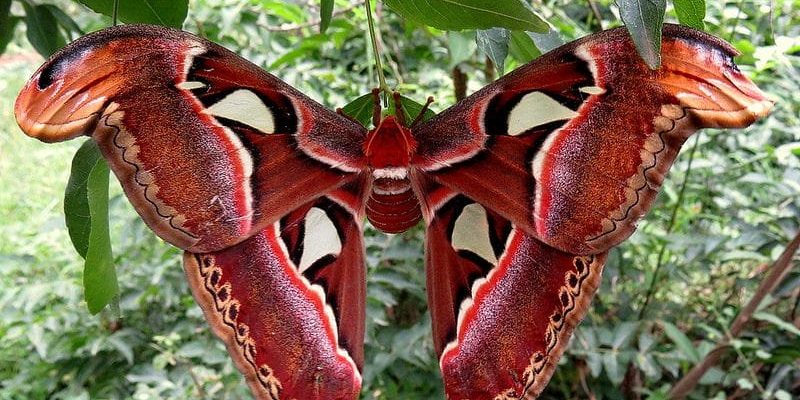
If you’ve ever wondered how a moth can be so captivating, you’re in for a treat. In this exploration, we’ll dive deep into ten fascinating facts about the Atlas moth, revealing what makes it truly unique. From its lifecycle to its unusual habits, it’s a story that showcases one of nature’s most interesting artists.
The Enormous Wingspan
Let’s start with the obvious—the wingspan. The Atlas moth can boast a wingspan of up to 10 inches. That’s about the size of a small bird! When it takes flight, it really is a sight to behold. Imagine walking through a lush jungle and suddenly spotting something that looks like a moving tapestry.
This impressive wingspan serves a purpose. Larger wings can help the moth glide effortlessly through the air, conserving energy during its flight. The moth’s size also helps to intimidate potential predators. Honestly, who would want to mess with something that looks so grand?
When you look closely at the wing patterns, you’ll notice they mimic the appearance of snakes. This clever design adds another layer of defense, tricking predators into thinking twice before approaching. It’s nature’s way of saying, “You might want to reconsider!”
Stunning Coloration and Patterns
The coloration of the Atlas moth is nothing short of breathtaking. Its wings are a mix of rich browns, oranges, and yellows, adorned with intricate markings. Some people even liken it to a piece of intricate art. The patterns not only serve to attract mates but also help in camouflage. When resting against tree bark or foliage, the moth blends seamlessly into its surroundings.
Speaking of artistry, have you ever noticed how every color serves a purpose? The vibrant hues can signify different things in the insect world. For the Atlas moth, brighter colors can attract mates during mating season, while more subdued shades help in hiding from predators. This dual purpose of beauty and survival is truly fascinating!
Short Lifespan and Unique Lifecycle
Here’s the thing—you might think that such a stunning creature would live a long life, but that’s not the case for the Atlas moth. In its adult form, it lives for about two weeks. That’s right, just a fortnight of flying, mating, and being stunningly beautiful!
The cycle begins when the female lays her eggs on a host plant. Once hatched, the caterpillars go through several stages, or instars, before they finally pupate into a chrysalis. It’s during this pupal stage that they undergo dramatic transformations. When the adult finally emerges, it’s like a butterfly coming out of a cocoon—albeit much larger and more spectacular!
This brief adult life may seem sad, but it’s all about reproduction. The moth focuses on mating and laying eggs, ensuring the next generation will emerge. Isn’t it interesting how nature has its own timeline?
Habitat and Range
The Atlas moth is typically found in the lush rainforests of Southeast Asia, particularly in countries like Malaysia, Indonesia, and India. These habitats provide essential food sources during their caterpillar stage and a safe environment for adult moths.
What’s stunning is how well the moth adapts to its surroundings. The dense forests provide plenty of hiding spots, and the warm climate suits their lifestyle perfectly. You might think they’d be easy to find, but their camouflage often keeps them hidden until you take a really close look.
If you ever get the chance to visit these rainforests, keep your eyes peeled! You may just catch a glimpse of these magnificent creatures fluttering about.
Feeding Habits and Behavior
You might be surprised to learn that adult Atlas moths don’t eat at all. That’s right—when they emerge, their sole purpose is to reproduce. They live off the energy stored during their caterpillar stage. It’s almost like they’re living on borrowed time.
In contrast, the caterpillars are voracious eaters, devouring leaves from various host plants. This feeding frenzy allows them to store up enough energy for the short adult life they will lead. Picture a caterpillar gorging itself on greens, preparing for its life as a winged wonder.
Their behavior is also intriguing. As nocturnal creatures, Atlas moths are active at night. They rely on their keen senses to find mates and evade predators, making them quite skilled at navigating the dark.
Predators and Defense Mechanisms
Living in the wild comes with its share of dangers. The Atlas moth has its own set of natural predators, including birds and small mammals. But don’t worry; they have some tricks up their sleeves to evade these threats.
One fascinating defense mechanism is their size combined with their wing patterns. When threatened, they can expand their wings and display the intimidating snake-like patterns, making them appear much more formidable. This bluff works surprisingly well!
Additionally, when resting, the moth often positions itself to blend in with tree trunks or leaves, making it nearly invisible. Nature sure knows how to equip its creatures with what they need to survive!
Role in the Ecosystem
The Atlas moth plays an important role in its ecosystem. While adult moths may not feed, their caterpillars do contribute to the local plant life. By eating leaves, they help regulate plant growth, which can enhance the health of the forest.
Moreover, the moths serve as food for various species, linking them into the food chain. Their presence also attracts other insects and animals, contributing to the biodiversity of their environment. It’s like a tiny, beautiful cog in the larger wheel of nature, ensuring everything works in harmony.
And let’s not forget the role they play in pollination! While moths aren’t as famous as bees for this, they contribute by helping plants reproduce. Isn’t it amazing how interconnected all these creatures are?
Conservation Status and Threats
Unfortunately, the Atlas moth faces threats due to habitat loss and deforestation. As rainforests are cleared for agriculture and development, these magnificent creatures lose their homes. It’s a pressing issue that impacts not just the moths but the entire ecosystem they inhabit.
Conservation efforts are underway, focusing on preserving their natural habitats. Organizations work tirelessly to raise awareness about the importance of these stunning moths and the unique ecosystems they belong to.
You might be wondering what you can do to help. Simple actions like supporting sustainable products, reducing plastic use, and participating in conservation programs can make a difference. Every little effort counts!
In conclusion, the Atlas moth is a true marvel of nature, showcasing incredible adaptations and fascinating life cycles. From its impressive wingspan to its role in the ecosystem, there’s so much to admire. Next time you think of moths, remember that they can be more than just tiny, fluttering insects—they can be grand, brilliant creatures that remind us of the beauty of biodiversity.

